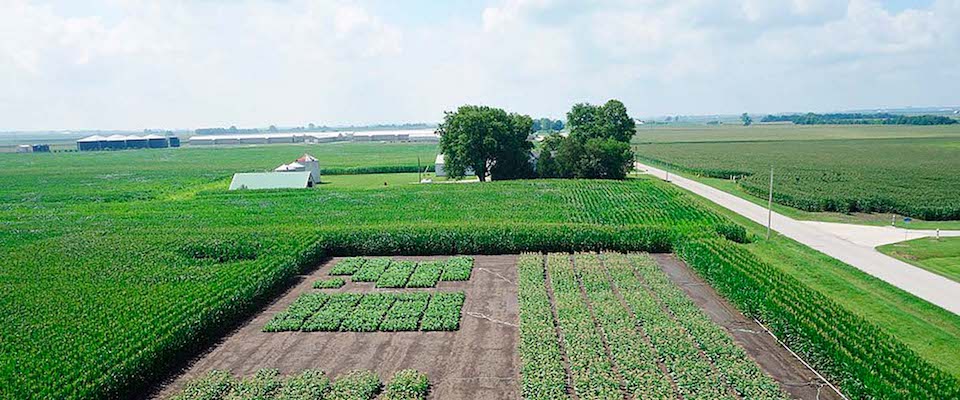UC Berkeley plant scientists, working with colleagues from the University of Illinois, have successfully supercharged the photosynthesis cycle, allowing genetically altered tobacco plants to grow as much as 20 percent larger simply by using more sunlight.
The promise of this groundbreaking research is by no means limited to tobacco. Researchers expect their techniques to translate readily to other plants, potentially boosting yields on existing farmland worldwide. Such an advance could help feed the world’s growing population without expanding agriculture’s already massive footprint.
“The goal was not to make better tobacco, but to sustainably improve the productivity of food crops, fiber crops, biofuel crops,” said study co-author Dr. Krishna Niyogi, professor of plant science at Berkeley. “We are now looking at food crops such as cassava, rice, sorghum, cowpeas, and maize, which are staples of small farmers throughout the developing world.”
Photosynthesis is the chemical wizardry by which green plants and phytoplankton use the sun’s energy to convert carbon dioxide (and water and minerals) into biomass (sugars and other molecules), providing the foundation of Earth’s food chain. The researchers did not attempt to alter the fundamental machinery of photosynthesis—instead they targeted three naturally occurring proteins that help plants protect themselves from sunburn.
When the energy-producing chloroplasts in leaves are overwhelmed by intense sunlight, pigments quickly activate to shield them, diverting excess light and allowing photosynthesis to carry on at a normal rate. This process, called non-photochemical quenching, or NPQ, prevents leaves from wilting or being scorched. But the protective pigments can be very slow to turn off once the danger has faded, reducing a shaded plant’s potential productivity by as much as 30 percent, researchers have estimated.
“About half of photosynthesis takes place under limited-light conditions, and any increased efficiencies in the process can add up into a big benefit over the growing season of a crop.”
NPQ activates almost instantly in bright light, but takes up to an hour to deactivate once shade is restored. Researchers aimed to shorten the time needed for NPQ to stand down, allowing plants a quicker return to full-bore photosynthesis after bright sunlight is dimmed by cloud cover, changes in the sun’s angle, or shading by neighboring plants.
Niyogi says it is not generally appreciated how much photosynthesis occurs in the shade. “About half of photosynthesis takes place under limited-light conditions, and any increased efficiencies in the process can add up into a big benefit over the growing season of a crop.”
Three Berkeley postdoctoral researchers from the Department of Plant and Microbial Biology, Lauriebeth Leonelli, Stéphane Gabilly, and Masakazu Iwai, and their colleagues in Dr. Stephen Long’s lab at Illinois, inserted extra copies of three plant genes into tobacco plants, a species chosen for ease of handling rather than its value as a crop. The extra genes proved effective, slashing NPQ recovery time by two-thirds or more.
Greenhouse and field trials were conducted, and the three altered lines were notably more vigorous than unmodified specimens. At harvest, the overall mass of the altered plants exceeded that of the control group by 14, 19, and 20 percent, respectively, Niyogi said.
Researchers expect the manipulation of pigment genetics will work to increase photosynthetic efficiency in most plants. Increasing crop productivity without the use of costly, unsustainable, and often harmful fertilizers and chemicals would benefit all humanity, including potentially millions of small farmers around the world who cultivate limited acreage with little opportunity for expansion. Increased photosynthesis also boosts carbon sequestration in soils, helping to mitigate climate change.
It remains to be seen whether increased photosynthesis will increase the yields of all crops. “The genes we changed are ones found in all plants, and the process we are modifying takes place in all plants,” Niyogi said. “The question is whether growth will increase in the harvested parts of the plant, such as the rice grain, and not just the leaf.”
The study’s results were published in the November 18 issue of the journal Science. The work was funded by the Bill and Melinda Gates Foundation, as part of an effort to boost sustainable farming and food production in food-insecure areas of the globe.
“We supported this study because we are very interested in fostering this type of breakthrough technology, which could result in agricultural systems working more efficiently, especially in the developing world,” said Katherine Kahn, a senior program officer for the Gates Foundation. “We are interested in helping farming families lift themselves out of poverty and contribute to sustainable global food systems.”



















